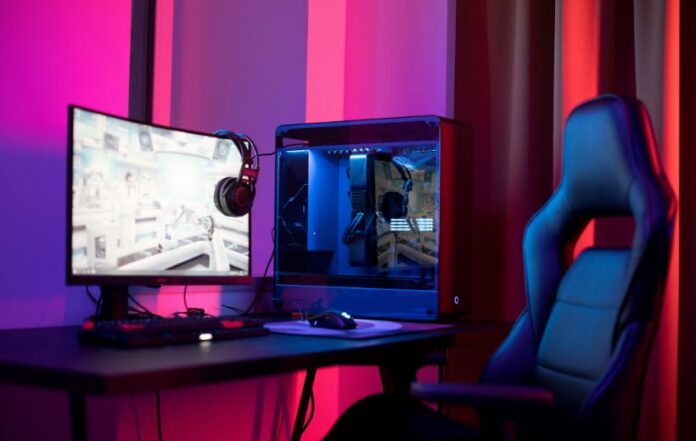Introduction
In the fast-evolving world of gaming, having the right equipment can make a significant difference in performance and overall experience. For any dedicated EGamer, a high-performance gaming PC is more than just a machine—it is the ultimate tool that combines speed, graphics, and efficiency. Whether you’re competing in esports, streaming, or simply enjoying immersive single-player titles, building a powerful gaming rig allows you to maximize your gameplay potential while future-proofing your setup.
This guide explores the essential components, considerations, and steps required to build a gaming PC that balances performance, budget, and long-term usability.
Why Building Your Own Gaming PC Matters
Building your own PC may seem daunting, but it provides complete control over performance, quality, and customization. Instead of relying on pre-built systems, an EGamer who builds their own machine gains several advantages:
- Cost-Effectiveness: You avoid paying premiums often associated with pre-built systems.
- Customization: Tailor your PC to meet your specific gaming needs—whether for 4K visuals, VR gaming, or competitive FPS.
- Future Upgrades: Choosing compatible parts ensures that your system can be easily upgraded in the future.
- Learning Experience: Building a PC increases your understanding of hardware, which helps with troubleshooting and optimization.
Essential Components of a High-Performance Gaming PC
1. Processor (CPU)
The CPU acts as the brain of your computer, handling game logic, physics, and overall performance. For an EGamer, choosing a high-quality processor is critical.
- Recommended Options: Intel Core i7/i9 or AMD Ryzen 7/9 series.
- Key Consideration: Higher clock speeds and multiple cores improve performance in both gaming and multitasking.
2. Graphics Card (GPU)
The GPU delivers the visuals that make games immersive. This is often the most important component for a gaming PC.
- Recommended Options: NVIDIA GeForce RTX 40-series or AMD Radeon RX 7000-series.
- Key Consideration: Look for a GPU with ample VRAM to handle modern high-resolution textures and future releases.
3. Memory (RAM)
RAM affects multitasking and loading times.
- Recommended Options: 16GB as a minimum; 32GB for high-end gaming and streaming.
- Key Consideration: Faster RAM speeds (3200MHz or higher) are beneficial for gaming.
4. Storage (SSD and HDD)
Fast storage ensures quick load times and smooth gameplay.
- Recommended Setup:
- NVMe SSD (500GB–1TB) for the operating system and frequently played games.
- HDD (2TB or more) for additional storage of large files and less-played titles.
5. Motherboard
The motherboard connects all components, so compatibility is essential.
- Recommended Options: Motherboards with PCIe 4.0 or 5.0 support for future-proofing.
- Key Consideration: Ensure compatibility with your CPU and support for high-speed RAM.
6. Power Supply Unit (PSU)
A reliable PSU ensures stability and longevity.
- Recommended Options: 650W–850W 80+ Gold certified PSU.
- Key Consideration: Always leave headroom for future upgrades, especially with GPUs.
7. Cooling System
High-performance PCs generate heat, so effective cooling is vital.
- Options:
- Air Cooling: Affordable and efficient for most setups.
- Liquid Cooling: Ideal for overclocking and keeping temperatures lower.
8. Case
The case not only houses all your components but also impacts airflow and aesthetics.
- Recommended Options: Mid-tower or full-tower cases with strong ventilation.
- Key Consideration: Choose a case with good airflow and enough room for cable management.
Steps to Building Your Gaming PC
- Plan Your Budget: Identify how much you are willing to spend. Allocate more funds toward GPU and CPU for the best gaming performance.
- Choose Compatible Components: Check compatibility between CPU, motherboard, RAM, and GPU.
- Assemble the PC: Install CPU, RAM, and cooler onto the motherboard before placing it inside the case. Then connect GPU, PSU, and storage.
- Install Operating System: Windows 11 is currently the most popular OS for gaming, with excellent compatibility and features like DirectStorage.
- Optimize Drivers and Settings: Update all drivers, install essential software, and tweak in-game settings for the perfect balance between performance and visuals.
Additional Tips for EGamers
- Monitor Choice: Pair your powerful system with a high-refresh-rate monitor (144Hz or higher) for smoother gameplay.
- Peripherals: Invest in a mechanical keyboard, high-DPI gaming mouse, and comfortable headset.
- Networking: A stable wired internet connection or a Wi-Fi 6 router ensures lag-free online gaming.
- Overclocking: If you’re comfortable, overclocking your CPU and GPU can unlock even greater performance, though proper cooling is necessary.
Conclusion
For any passionate EGamer, building a high-performance gaming PC is one of the most rewarding investments. It allows for unmatched customization, superior performance, and long-term scalability. By carefully selecting each component and ensuring proper setup, gamers can create a rig tailored specifically to their needs—whether for competitive esports, streaming, or immersive single-player adventures.




